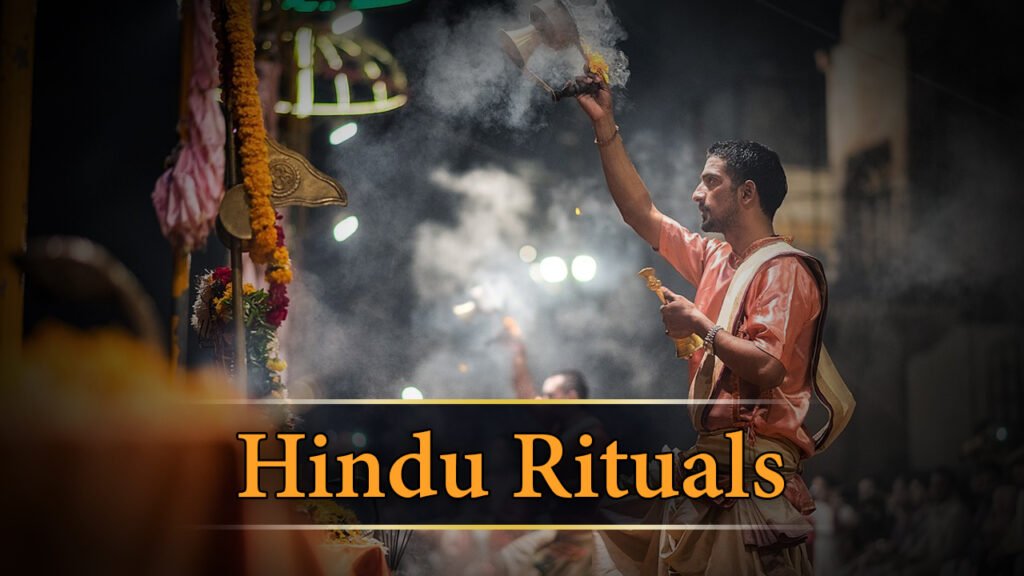Introduction to Maha Mrityunjaya Puja
In the rich tapestry of Hindu rituals, the Maha Mrityunjaya Puja stands out as a powerful and revered practice. This ancient ritual, dedicated to Lord Shiva, is believed to bestow longevity, ward off untimely death, and provide protection from various life-threatening situations. As we delve into the depths of this sacred ceremony, we’ll uncover its significance, origins, and the vital role it plays in Hindu spiritual life.
Origins and Significance
Vedic roots
The Maha Mrityunjaya Puja traces its origins to the ancient Vedic scriptures, specifically the Rig Veda. This sacred text, Hindu Rituals considered one of the oldest known religious works, contains the Maha Mrityunjaya Mantra, which forms the core of this puja. The mantra’s inclusion in such an ancient and revered text underscores its profound importance in Hindu theology and practice.
Mythological background
Hindu mythology provides a fascinating backdrop to the Maha Mrityunjaya Puja. Legend has it that the sage Markandeya was destined to die at the young age of 16. His father, desperate to save his son, prayed intensely to Lord Shiva. Hindu Rituals Moved by the devotion, Shiva blessed Markandeya with immortality through the power of the Maha Mrityunjaya Mantra. This story not only illustrates the mantra’s potency but also highlights its association with overcoming death and adversity.
The Maha Mrityunjaya Mantra
Meaning and interpretation
At the heart of the Maha Mrityunjaya Puja lies the Maha Mrityunjaya Mantra. This powerful incantation, often referred to as the “Great Death-Conquering Mantra,” is composed of just a few lines but carries immense spiritual weight. Let’s break it down:
“Om Tryambakam Yajamahe
Sugandhim Pushti-Vardhanam
Urvarukamiva Bandhanan
Mrityor Mukshiya Maamritat”
Translated, it means: “We worship the three-eyed One (Lord Shiva) who is fragrant and nourishes all beings. May He liberate us from death for the sake of immortality, just as the cucumber is severed from its bondage (to the creeper).”
Spiritual benefits
The Maha Mrityunjaya Mantra is believed to offer a plethora of spiritual benefits. Devotees chant it to seek protection from accidents, illnesses, and other life-threatening situations. Moreover, it’s said to purify the mind, body, and soul, leading to spiritual growth and enlightenment. Many practitioners report feeling a sense of peace, clarity, and divine connection when reciting this mantra regularly.
Components of Maha Mrityunjaya Puja
Ritual items
Performing the Maha Mrityunjaya Puja requires several specific items, each carrying symbolic significance. These typically include:
- A Shiva Lingam or image
- Rudraksha beads
- Bel leaves
- Flowers (preferably white)
- Incense sticks
- Ghee lamp
- Sandalwood paste
- Holy water (Gangajal)
- Fruits and sweets for offering
Preparation
Preparation is key to performing the puja effectively. It’s essential to cleanse oneself both physically and mentally before beginning the ritual. This usually involves taking a bath, wearing clean clothes, and creating a calm, peaceful environment for the puja. Many devotees also fast or observe dietary restrictions leading up to the ceremony to enhance their spiritual receptivity.
Performing the Puja
Step-by-step guide
- Begin by purifying the puja area with holy water.
- Light the ghee lamp and incense sticks.
- Offer flowers and bel leaves to the Shiva Lingam or image.
- Apply sandalwood paste to the Lingam.
- Recite the Maha Mrityunjaya Mantra 108 times, using Rudraksha beads to keep count.
- Offer fruits and sweets as prasad.
- Perform aarti (ritual of light) while chanting hymns to Lord Shiva.
- Conclude with a prayer for protection and blessings.
Mantras and chants
While the Maha Mrityunjaya Mantra is central to the puja, other chants and hymns are often incorporated. These may include the Om Namah Shivaya mantra, Shiva Chalisa, or other Shiva stotras (hymns). The specific mantras used can vary based on regional traditions and personal preferences.
Importance in Hindu Rituals
Life-cycle ceremonies
The Maha Mrityunjaya Puja plays a significant role in various Hindu life-cycle ceremonies. It’s often performed during major milestones such as:
- Birth ceremonies
- Coming-of-age rituals
- Weddings
- Housewarming ceremonies
- Death anniversaries
In each of these contexts, the puja serves to invoke divine protection and blessings, ensuring the well-being and longevity of the individuals involved.
Healing and protection
Beyond life-cycle events, the Maha Mrityunjaya Puja is frequently conducted for healing and protection. Many Hindus turn to this ritual when facing health crises, undertaking dangerous journeys, or during times of personal turmoil. The puja is believed to create a protective shield around the devotee, warding off negative energies and promoting physical and spiritual healing.
Modern Adaptations
Simplified versions
In today’s fast-paced world, many practitioners have adapted the Maha Mrityunjaya Puja to fit into busy lifestyles. Simplified versions of the ritual may focus primarily on mantra recitation, omitting some of the more elaborate offerings and procedures. While purists might argue that this diminishes the puja’s efficacy, others contend that the sincerity of devotion matters more than the complexity of the ritual.
Online pujas
The digital age has brought about another interesting development: online Maha Mrityunjaya Pujas. Various websites and apps now offer virtual puja services, where devotees can participate in the ritual remotely. While this approach lacks the tactile and immersive experience of a traditional puja, it has made the practice more accessible to people around the world, especially those who may not have access to a temple or the necessary puja items.
Read Also: The effect Remedies and Benefits of Shankhpal Kaal Sarp Dosh
Conclusion
The Maha Mrityunjaya Puja stands as a testament to the enduring power of ancient Hindu rituals in contemporary spiritual life. Its blend of profound philosophy, mythological significance, and practical benefits continues to attract devotees seeking protection, healing, and spiritual growth. Whether performed in its traditional, elaborate form or adapted to modern circumstances, this puja remains a vital thread in the rich tapestry of Hindu religious practice. As we navigate the complexities of the modern world, the timeless wisdom encapsulated in the Maha Mrityunjaya Puja offers a beacon of hope, protection, and spiritual enlightenment.
For interesting astrology-related videos, subscribe to us on YouTube
FAQs
- Can non-Hindus perform the Maha Mrityunjaya Puja?While the puja is rooted in Hindu tradition, there’s no strict prohibition against non-Hindus performing it. However, it’s important to approach the ritual with respect and understanding of its cultural and spiritual significance.
- How often should one perform the Maha Mrityunjaya Puja?The frequency can vary based on individual needs and circumstances. Some perform it daily, while others may do so on specific occasions or during times of crisis. Consulting with a knowledgeable priest can provide personalized guidance.
- Is it necessary to use all the traditional puja items, or can substitutions be made?While traditional items are preferred, sincere devotion is considered most important. In cases where certain items are unavailable, suitable substitutions can be made with the right intention.
- Can the Maha Mrityunjaya Puja be performed for someone else?Yes, it’s common to perform the puja on behalf of loved ones, especially those who are ill or facing difficulties. This is seen as an act of compassion and spiritual support.
- Are there any restrictions or prerequisites for performing the Maha Mrityunjaya Puja?Generally, it’s advised to approach the puja with a pure heart and clean body. Some traditions recommend fasting or dietary restrictions before the ritual, but practices can vary. It’s best to consult with a knowledgeable spiritual guide for specific guidelines.

